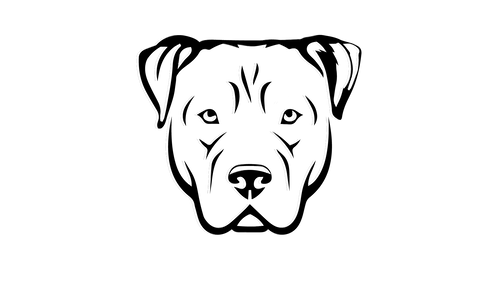We use the term "socialization" a lot when discussing dog behaviour, but what does socialization really look like? Socializing your dog is not just visiting dog parks and arranging play dates, and it actually involves more than just your dog interacting with other dogs in order to create a solid, sound foundation for your puppy.
Socialization begins before your dog comes home. Your puppy begins learning about socialization from it's owners, mother and littermates. It learns how to speak, play and nip - and also learns that biting hurts. That's why it's so important for puppies to be rehomed after 8 weeks of age, so they can spend that time learning valuable lessons with their family!
From 8-16 weeks, exposure is the name of the game. During this age your puppy wants to explore just about everything. They have very little fear of the unknown, and using this natural instinct to learn and experience new stuff will benefit both you and your dog.
Using a checklist to introduce your dog to new things can really help. The key in accomplishing each check is having your puppy be OK with the new exposure. Playtime is fun and great for learning how to communicate with other dogs, but you also want you puppy to be able to achieve a neutral/ calm state around other dogs and environments as well. As they grow, introducing structured pack walks with other dogs supports their ability to remain in a neutral state while in the presence of others.
What's on the socialization checklist? Be sure to include:
HUMANSWomen People of many ethnicities Tall men Men with deep voices Men with beards Elderly People wearing hats, helmets People wearing hoodies People wearing backpacks People wearing sunglasses People with canes, walking sticks or walkers Teenagers/ Young adults Children standing as well as playing Toddlers (walking and squealing) Infants (crawling) People running by |
TOUCHINGChecking the ears Examining mouth and gums Opening the eyelids Touching and holding the feet Handling and trimming the toenails Pinching skin lightly (emulating a vet exam) Poking the skin with a capped pen (emulating a needle) Touching the nose Cradling puppy in your arms on its back Holding him in your lap Holding puppy upside down Holding puppy on its back while giving a belly rub Hugging your puppy Pulling the collar (gotcha) Grabbing puppy by other part of body Wiping body with a towel Putting on a harness or jacket Touching and holding their tail |
DOGSDogs who play well A dog who will reprimand puppies with appropriate force and restraint for getting into his personal space Puppies who play well and do not get overly aroused |
ANIMALSCats Horses and livestock Large and small birds Small mammals (Hamsters, etc.) Any reptiles or exotic animals that you may have or know your dog might come into contact with |
SURFACESConcrete Slippery floors such as hardwood, linoleum or marble Metal surfaces-such as manhole covers, vet hospital scales Wobbly surfaces such as BOSU® ball, a board on top of a book or unbalanced thick tree branch, a wobble board Stairs Wet grass Mud Ice, frost, or snow |
LOUD NOISESThunder Fireworks Babies and kids Alarms Dogs barking Doorbell wringing Traffic (like downtown in a city) Jack hammers Vacuum cleaner Sirens |
ENVIRONMENTSSuburban neighborhood Residential city street High traffic city street (such as downtown) Shopping mall Indoor parking lot Dog-friendly event such as an agility or obedience trial, or expo Locations of several different dog training classes |
OBJECTSSkateboards Rollerblades Garbage bins Shopping carts Baby strollers Wheel chairs Bikes Cars Buses Motorcycles Pots and pans Blankets or rugs being shaken Brooms Balloons Umbrellas Bags blowing in the wind Sidewalk signs Garbage cans in the house Electric and push scooters |
Take note of how your dog reacts to these things. Are the overexcited? Are the nervous or scared? Did they seem content and not phased by them? Exposures that cause fear or overexcitement are ones that need to be worked on with slow and steady repetition. Remove your puppy from the exposure when they show these signs, and repeat the exposure at a later date with encouragement and your distraction. Getting them to focus on you while being exposed to the environment that is causing the reaction is the goal.

